Astronomy Resources
The amateur astronomy hobby can seem somewhat complicated for thos who are just starting out. Good information can be hard to find if you don't know where to look. This astronomy resources page contains links to information for the amateur astronomy hobby. These recommended sources include online information services, online astronomy magazines, and some of the most popular astronomy books. We are always on the lookout for more great resources to add. If you know of any good astronomy resources that are not represented here, please send an e-mail and we will consider adding the resource to this page.
 Space.com
Space.com is an excellent online resource offering a wealth of information including original news and educational features about space, science, and space
technology. Included on this site is SpaceViews, which contains images and videos on a wide range of space-related topics.
 NASA Human Space flight
NASA Human Space flight provides detailed, up-to-date information on all manned spaceflight programs currently underway at NASA. The site features information about the Space Shuttle, the International Space Station, and current space news. Also available are real-time such as NASA-TV and orbital tracking. The site also has a media library featuring thousands of images, video and audio from recent missions.
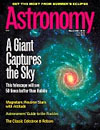 Astronomy Magazine
Astronomy Magazine
Astronomy Magazine is the world's largest English-language magazine for Astronomy hobbyists. Produced by Kalmbach Publishing Co., it is read by over 300,000 persons each month. The online magazine site features astronomy news, a monthly calendar of sky events, astronomy product information, hobby information, and a catalog of available books and magazines available from the publisher.
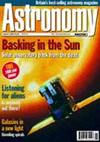 Astronomy Now Magazine
Astronomy Now Magazine
Astronomy Now is Britain's best-selling astronomy magazine. Their online site features breaking astronomy news, information about what is available in their current issue, listings of astronomical meeting & events, and an online form for subscriptions and back issues. The site also features an excellent monthly listing of astronomical events. This detailed listing includes moon phases, conjunctions, occultations, planet positions, and more.
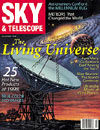 Sky & Telescope
Sky & Telescope
Sky & Telescope is one of the world's leading sources of accurate and up-to-date information about astronomy and space science. It appeals to the full spectrum of astronomy enthusiasts, from the novice ready to purchase a first telescope, to the enthusiastic amateur looking to enhance observing skills and equipment, to the professional desiring to keep up with this dynamically changing field. The online site features astronomy news, a day-by-day weekly calendar of sky events, observing tips, and resources for the astronomer. Subscriptions and back issues can be ordered online.
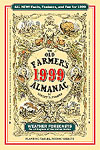 The Old Farmer's Almanac
The Old Farmer's Almanac
The Old Farmer's Almanac has been a long-time favorite resource for the amateur astronomer. The Almanac, North America's oldest continuously published periodical, comes out every year in September. It has published useful information for people in all walks of life. The section entitled "What's Happening in the Heavens" gives detailed information of upcoming astronomical events for the entire year, including planetary conjunctions, eclipses, meteor showers, and more.
Recommended Astronomy Books
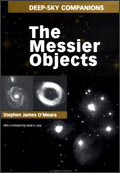 Deep Sky Companions: The Messier Objects
Stephen James O'Meara
Cambridge University Press
Deep Sky Companions: The Messier Objects
Stephen James O'Meara
Cambridge University Press
Charles Messier was one of the best comet hunters of the 1700s, with 12 comet discoveries to his credit. He was frustrated because he kept wasting time looking at fuzzy objects that turned out not to be comets. The list he kept and published of "things that aren't comets" turned out to be his ticket to immortality. Amateur astronomers of all ages enjoy tackling the Messier catalogue members, because they represent a good sampling of what's "out there," and because finding them helps to hone observing skills. In a sense, the Messier objects are the testing grounds for budding skywatchers.
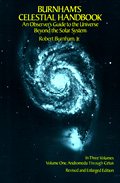 Burnham's Celestial Handbook Volume 1
Robert Burnham
Dover Publications, Incorporated
Burnham's Celestial Handbook Volume 1
Robert Burnham
Dover Publications, Incorporated
While there are many books on the stars, there is only one Celestial Handbook. Available in both hardcover and paperback, this reference is a necessary addition to the collection of any serious amateur astronomer. In 3 volumes, the author gives comprehensive coverage to the thousands of celestial objects outside our solar system that are within the range of telescopes in the two to twelve-inch range. Objects are grouped according to the constellations in which they appear. Extensive descriptive notes accompany each object.
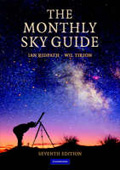 The Monthly Sky Guide
The Monthly Sky Guide Ian Ridpath, Wil Tirion
Cambridge University Press
Ian Ridpath, Wil Tirion
Cambridge University Press
An easy-to-use, month-by-month handbook for anyone wanting to identify constellations, star clusters, nebulae, galaxies, and meteor showers, or to plot the movement of the planets, this beginner's guide offers a clear and simple introduction to the skies of the northern hemisphere. The positions of the planets are listed to the end of the year 2000. 50 sky maps. The new edition of this famous guide to the night sky lists the positions of the planets to the end of the year 2000. For the first time, the text lists all solar and lunar eclipses, month by month. It offers a clear and simple introduction to the northern hemisphere skies.
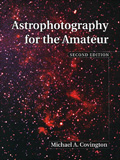 Astrophotography for the Amateur
Michael A. Covington
Cambridge University Press
Astrophotography for the Amateur
Michael A. Covington
Cambridge University Press
Astrophotography for the Amateur provides a complete guide to taking pictures of stars, galaxies, the Moon, the Sun, comets, meteors and eclipses, using equipment and materials readily available to the hobbyist. This new edition includes chapters on computer image processing and CCD imaging; expanded advice on choosing cameras and telescopes; updated information about new films; and hundreds of new photographs (in color and black and white) demonstrating the latest equipment and techniques. This book will appeal to photography enthusiasts who can discover how to take spectacular images with only modest equipment.
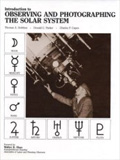 Introduction to Observing and Photographing the Solar System
Introduction to Observing and Photographing the Solar System Thomas A. Dobbins, Donald C. Parker, Charles F. Capen
Willmann-Bell, Incorporated
Thomas A. Dobbins, Donald C. Parker, Charles F. Capen
Willmann-Bell, Incorporated
This 215-page hardcover book is an excellent resource for anyone who is serious about observing and/or photographing the Sun, Moon, and planets. The book is full of tips, tricks, secrets, and shortcuts that can only be provided by the authors' years of experience. This book can help anyone get started in making better and more accurate observations. It can also help astrophotographers get amazing results with a minimum of equipment and investment.
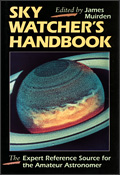 Sky Watcher's Handbook: The Expert Reference Source for the Amateur Astronomer
Sky Watcher's Handbook: The Expert Reference Source for the Amateur Astronomer James Muirden (Editor) A. W. Freeman (Editor)
Oxford University Press, Incorporated
James Muirden (Editor) A. W. Freeman (Editor)
Oxford University Press, Incorporated
Sky Watxher's Handbook is an excellent resource for the amateur astronomer who, having passed through the first stage if getting acquainted with the sky, has decided to concentrate on a particular object or class of objects and make serious observations. This book represents a compilation of expertise from several amateur astronomers from around the world. Each is a leader in their field, and each has shared their knowledge on the equipment and resources need and on the observation techniques to be employed.
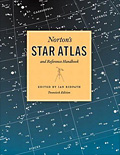 Norton's Star Atlas and Reference Handbook, 20th Edition
Norton's Star Atlas and Reference Handbook, 20th Edition Ian Ridpath
Longman Publishing Group
Ian Ridpath
Longman Publishing Group
First published in 1910, Norton's Star Atlas contributes its success largely to its unique maps, arranged in slices or gores, each covering approximately one-fifth of the sky. The 20th edition has been helpfully updated and beautifully redesigned with new data tables and sections on the recently developed computer-controlled telescopes and CCD imaging. You'll find every object visible to the naked eye, as well as star clusters, galaxies, and other celestial objects.

 Space.com is an excellent online resource offering a wealth of information including original news and educational features about space, science, and space
technology. Included on this site is SpaceViews, which contains images and videos on a wide range of space-related topics.
Space.com is an excellent online resource offering a wealth of information including original news and educational features about space, science, and space
technology. Included on this site is SpaceViews, which contains images and videos on a wide range of space-related topics.
 NASA Human Space flight provides detailed, up-to-date information on all manned spaceflight programs currently underway at NASA. The site features information about the Space Shuttle, the International Space Station, and current space news. Also available are real-time such as NASA-TV and orbital tracking. The site also has a media library featuring thousands of images, video and audio from recent missions.
NASA Human Space flight provides detailed, up-to-date information on all manned spaceflight programs currently underway at NASA. The site features information about the Space Shuttle, the International Space Station, and current space news. Also available are real-time such as NASA-TV and orbital tracking. The site also has a media library featuring thousands of images, video and audio from recent missions.
 Astronomy Magazine
Astronomy Magazine
 Astronomy Now Magazine
Astronomy Now Magazine
 Sky & Telescope
Sky & Telescope
 The Old Farmer's Almanac
The Old Farmer's Almanac
 Deep Sky Companions: The Messier Objects
Deep Sky Companions: The Messier Objects Burnham's Celestial Handbook Volume 1
Burnham's Celestial Handbook Volume 1 The Monthly Sky Guide
The Monthly Sky Guide Astrophotography for the Amateur
Astrophotography for the Amateur Introduction to Observing and Photographing the Solar System
Introduction to Observing and Photographing the Solar System Sky Watcher's Handbook: The Expert Reference Source for the Amateur Astronomer
Sky Watcher's Handbook: The Expert Reference Source for the Amateur Astronomer Norton's Star Atlas and Reference Handbook, 20th Edition
Norton's Star Atlas and Reference Handbook, 20th Edition